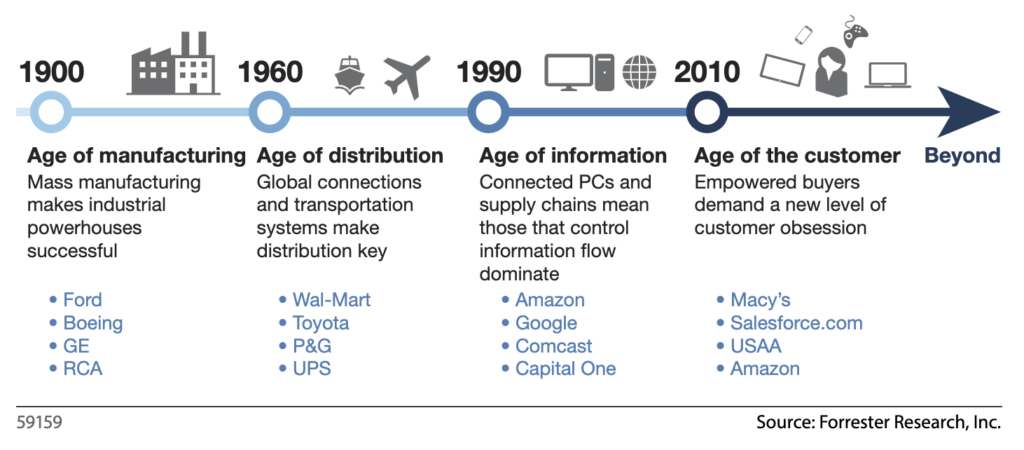Digital Merchandising: Best Practices for merchandising excellence

According to recent data, global digital merchandising sales are projected to surpass $8 trillion by 2027 with a significant growth rate, representing a substantial portion of overall retail sales as e-commerce continues to expand rapidly worldwide; with some estimates placing the market share of online retail sales at nearly 25% by that time.
This upward trend in eCommerce highlights a critical reality for businesses today: digital commerce is the future. While challenges such as economic shifts and supply chain disruptions may arise, those businesses that adapt to the evolving market landscape will be better positioned to thrive. Digital merchandising plays a pivotal role in this success.
Why Digital Merchandising is Crucial for Your eCommerce Success
The explosive growth of online shopping is easy to understand. Whether it’s purchasing a product or booking a service, the sheer convenience of eCommerce, combined with a vast selection of options, offers an experience that is far more rewarding for the modern consumer.
For businesses, the rise of digital commerce offers unprecedented opportunities:
- Geographical expansion beyond local markets.
- Increased visibility to a global audience.
- Organic revenue growth by tapping into new customer bases.
However, these advantages come with challenges. To fully capitalize on digital commerce, businesses must ensure they are noticed by their target audience, build trust with new customers, and offer a shopping experience that fosters loyalty. This is where digital merchandising becomes indispensable.
What is Digital Merchandising?
Digital merchandising, also known as eCommerce merchandising, is the strategic process of showcasing products or services online in a way that highlights their value and appeal. This process involves using a blend of design, categorization, and product placement to guide customers toward making a purchase, all while creating an effortless and enjoyable shopping experience.
In essence, while digital commerce revolves around selling, digital merchandising focuses on how these sales are facilitated. It’s the virtual equivalent of designing an attractive storefront, arranging products to capture attention, and ensuring that everything is displayed clearly and effectively. Key elements of successful digital merchandising include:
- Branding consistency across the website.
- High-quality imagery and videos that showcase products in the best light.
- Effective product categorization that helps customers find what they need easily.
- Compelling product descriptions with detailed information.
Addressing Customer Trust and Confidence Online
Despite the growing comfort with online shopping, many consumers still harbor concerns, such as security and reliability. Additionally, there are aspects of traditional, in-store shopping that digital merchants cannot fully replicate—yet. One significant challenge is the lack of a tactile experience, where customers cannot physically touch and feel a product before purchasing it.
To overcome these barriers, eCommerce businesses must rely on strategic digital merchandising techniques:
- High-quality images: Provide multiple product angles, close-ups, and zoom-in features to allow customers to examine the product in detail.
- Detailed product descriptions: Include dimensions, material specifications, and other technical information to build confidence.
- User-generated content: Encourage reviews, ratings, and customer-uploaded images or videos. User-generated content creates social proof, offering potential buyers a sense of reliability.
Combined, these elements can offer a shopping experience that comes close to or even exceeds an in-store experience.

Best Practices: How to Excel at Every Step
The number of eCommerce websites is increasing exponentially, which means opportunities for growth are abundant—but so is the competition. To truly stand out, businesses must focus on creating a unique digital merchandising strategy that sets them apart from others. Below are key best practices that every eCommerce business should implement:
1. Optimize Your Website for Search Engines (SEO)
To drive traffic to your site, optimizing for SEO is essential. Ensure that product titles, descriptions, and meta tags contain relevant keywords. This makes it easier for search engines like Google to rank your products, increasing visibility and traffic.
Example: Instead of using a generic product title like “Men’s Shirt,” use a more specific and keyword-optimized title like “Slim Fit Cotton Men’s Dress Shirt – Blue.”
2. Use High-Quality, Engaging Visuals
Images and videos play a significant role in digital merchandising. Invest in high-quality product photos and 360-degree product views that allow customers to engage with the product visually. Additionally, using videos that demonstrate how products work can further boost conversion rates.
3. Simplify Product Categorization
When customers can’t find what they are looking for, they are likely to leave your site. Ensure that your product categories are logical and intuitive. Implement filters like price range, color, and size to make it easy for customers to narrow down their options.

4. Leverage Customer Reviews and Ratings
Encourage customers to leave reviews and rate their purchases. This user-generated content serves as valuable social proof, building trust with new customers. Integrate a review system prominently on product pages and follow up with customers post-purchase to ask for feedback.
5. Personalize the Shopping Experience
Harness the power of personalization by using data-driven strategies to tailor the shopping experience. Offer product recommendations based on previous purchases or browsing history, and send personalized emails with products that align with customer interests.
6. Optimize for Mobile Devices
With more than half of all eCommerce transactions occurring on mobile devices, optimizing your website for mobile shopping is no longer optional—it’s a necessity. Ensure that your site is mobile-friendly, with easy navigation and fast loading times.
7. Create a Seamless Checkout Process
A complicated checkout process can result in cart abandonment. Simplify your checkout flow by offering guest checkout options, reducing the number of steps, and providing various payment methods.
Take Your Digital Merchandising to the Next Level
In the ever-growing digital commerce space, effective digital merchandising is key to standing out from competitors and creating a seamless, enjoyable shopping experience that drives sales and customer loyalty. As you refine your merchandising strategies, remember to stay agile and adapt to new trends and technologies in eCommerce.
Need more guidance on your digital merchandising journey? Get in touch with our eCommerce experts for personalized insights and support.
As digital commerce continues to grow exponentially, businesses must leverage the power of digital merchandising to stay ahead of the curve. From SEO optimization to engaging visuals and seamless mobile experiences, adopting these best practices will help businesses attract more customers, build trust, and boost conversions.




